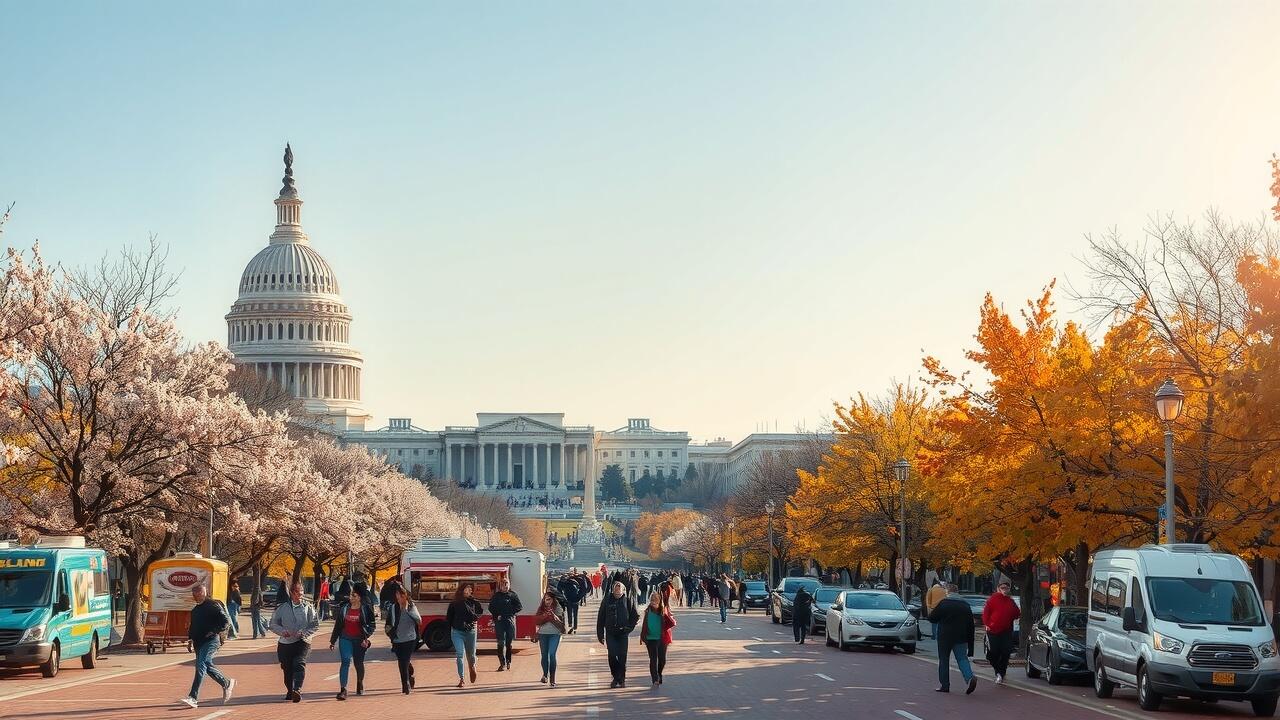
Table Of Contents
United States Capitol
The United States Capitol stands as a symbol of democracy and an architectural marvel in the heart of Washington, D.C. This iconic building houses the legislative chambers of the U.S. Congress. Visitors are often taken aback by the majestic dome that rises above the city skyline. Guided tours offer a chance to explore the ornate interiors and learn about the rich history of American governance.
Surrounding the Capitol, the grounds feature beautifully landscaped gardens and historic statues that provide a scenic backdrop for photos. Proximity to other notable landmarks makes it a popular stop for tourists. The building’s significance goes beyond its physical appearance; it represents the democratic ideals and legislative processes that shape the nation. Exploring the Capitol offers insights into the workings of American democracy and a deeper appreciation for the nation's history.
United States Capitol
Lincoln Memorial
Situated at the west end of the Reflecting Pool, this monument honors President Abraham Lincoln. It features a colossal seated statue of Lincoln, crafted by sculptor Daniel Chester French. Surrounding the statue are 36 columns, each representing a state in the Union at the time of Lincoln's death. The grandeur of the memorial draws visitors from around the world, who come to reflect on Lincoln's legacy and his impact on American history.
Visitors often take a moment to sit on the steps, enjoying the view of the National Mall. This spot holds significant historical importance, serving as the site for Martin Luther King Jr.'s famous "I Have a Dream" speech. The memorial’s design and presence convey a sense of reverence, inviting contemplation about freedom, equality, and justice in the nation. Lighting playfully enhances its beauty at night, making it a remarkable sight after dark.
Lincoln Memorial
National Gallery of Art
The National Gallery of Art stands as a monumental institution dedicated to the visual arts. Located on the National Mall, it houses an extensive collection spanning centuries, featuring works from renowned artists such as Van Gogh, Monet, and Vermeer. The gallery is divided into two main buildings: the West Building, showcasing European paintings and sculptures, and the East Building, which focuses on modern and contemporary art. Visitors often appreciate the elegant architecture and serene gardens that surround the complex.
Beyond its impressive collection, the gallery offers a range of educational programs and temporary exhibitions that enhance the visitor experience. Interactive tours, lectures, and workshops invite audiences of all ages to engage with art in meaningful ways. The museum also boasts a café and a gift shop, making it a convenient stop for a relaxing afternoon. Whether one is a seasoned art enthusiast or a casual visitor, the National Gallery of Art provides a rich atmosphere for exploration and inspiration.
National Gallery of Art
The White House
Nestled at 1600 Pennsylvania Avenue NW, the White House serves as the official residence and workplace of the President of the United States. Its neoclassical architecture and iconic façade make it one of the most recognizable buildings in the world. The structure has been the centerpiece of American politics since its completion in 1800, housing numerous historical events, ceremonies, and state visits. Visitors often admire the beautifully landscaped gardens, including the Rose Garden and the Jacqueline Kennedy Garden.
Public tours provide guests with a glimpse into the historic rooms adorned with fine art and antique furnishings. While access to the White House requires advance planning and security clearance, the experience of walking through the same halls that have hosted countless world leaders is unforgettable. The proximity to other significant landmarks enhances the appeal of this site, making it a must-visit during any trip to the nation’s capital.
The White House
FAQS
What are the must-visit landmarks in the District of Columbia?
Some of the must-visit landmarks in the District of Columbia include the United States Capitol, Lincoln Memorial, National Gallery of Art, and The White House.
Are there any entry fees for visiting these attractions?
Most of the major attractions in the District of Columbia, such as the Lincoln Memorial and the United States Capitol, are free to visit. However, some museums and galleries may have entry fees or require timed tickets.
Is it necessary to book tours in advance for the White House?
Yes, if you want to tour the White House, it is recommended to submit a request through your Member of Congress at least 21 days in advance, as tours are limited and fill up quickly.
What is the best time of year to visit the District of Columbia?
The best time to visit the District of Columbia is during the spring (March to May) and fall (September to November) when the weather is mild and the city’s parks and monuments are particularly beautiful.
Are there any family-friendly activities available in the District of Columbia?
Yes, the District of Columbia offers many family-friendly activities, such as visiting the National Mall, exploring the Smithsonian museums, and taking part in guided tours that cater to children.